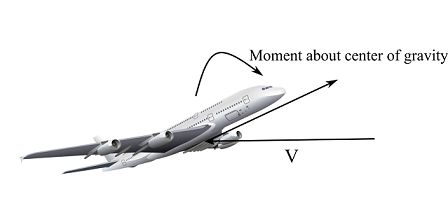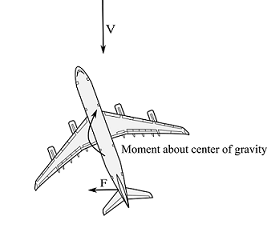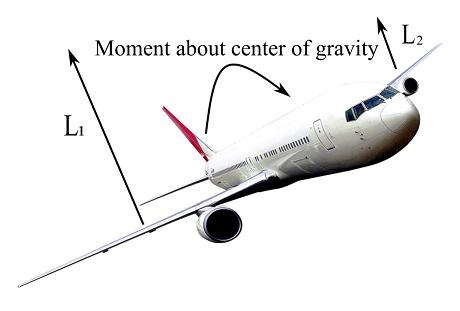What are longitudinal static stability, directional static stability and lateral static stability for an airplane?
What are longitudinal static stability, directional static stability and lateral static stability for an airplane?
Longitudinal static stability : It is the stability of an aircraft in longitudinal or pitching flight conditions. Pitching motion of an aircraft is its nose up and down movement on the pitch axis which is also called the lateral axis, perpendicular to the aircraft’s centerline and lies in the plane of wings.
An airplane is flying in equilibrium when the sum of all forces and moments acting on the airplane is zero. If there is a change in the angle of attack of an aircraft by a gust, there is a change in forces and moments and this change can produce the nose up of the airplane still further, for this case airplane will be longitudinal statically unstable and the motion of the airplane will diverge from its equilibrium.
However, if the airplane generates a restoring force and moment to bring the airplane back to equilibrium condition then the airplane has longitudinal static stability. There can be a situation when the airplane can have a tendency to maintain the disturbed position, in such a case it is in longitudinal neutral static stability.
Directional static stability: It is the stability of an airplane associated with the yawing motion. Yawing motion is the airplane’s movement of nose left and right about the yaw axis which is perpendicular to the wing and lies in the airplane’s centerline plane. Fuselage and vertical stabilizer are the important components in directional stability.
An airplane flying in equilibrium condition will have no yaw and the yaw angle will be zero. An airplane should generate a positive restoring yawing moment about the center of gravity if it is disturbed to a negative yaw angle. Similarly, it should generate a negative restoring yaw moment if it is disturbed to a positive yaw angle. This is directional static stability.
If the airplane has a tendency to increase its disturbed position, moving away from its equilibrium position then it has directional static unstability or is directionally unstable. If the airplane has tendency to hold its disturbed position, then the airplane has a directional neutral stability or is neutral directional stable.
Lateral static stability: It is the rolling stability. If an aircraft when disturbed rolls to some bank angle and then generates forces and moments that will tend to reduce the bank angle and come back to equilibrium flight conditions, the airplane is said to have lateral static stability.
Lateral stability can be achieved by the dihedral. Position of wing and wing sweep has also an effect on lateral stability. There is always a cross-coupling between the yawing and rolling motion of an airplane, so lateral and directional stability are interrelated.






